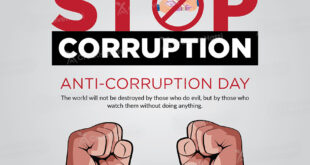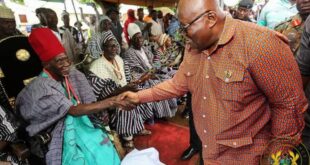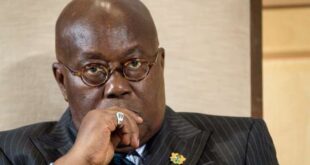 I read the statement below written by my brother Richard Forgor and pasted on many social media (facebook and whatsapp) platforms;
I read the statement below written by my brother Richard Forgor and pasted on many social media (facebook and whatsapp) platforms;
“The committee set up by the Overlord of Gonjaland to oversee the creation of the new region headed by Buipe Wura Jinapor II has assured they will will include the Vagla Chiefs in the chieftaincy structure of the new region.
This was revealed by the Vagli Koora at the 12 National Congress of the Vagla Youth Association held over the weekend at the Bole Senior high School.
They have therefore asked the Koora to present a proposed structure for adoption which they are working on”.
On reading the above the first question that came into my mind was; I thought Vaglas are already included in the Chieftaincy structure of the Gonja Traditional Area especially in the Bole Traditional Area since the days of Ndewura Jakpa?
I sincerely think Chiefs who are not from the Bole Traditional area should be careful not to do anything that will create problems or open old wounds. They should do enough consultation before making some comments or taking certain decisions that can plunge the Bole area into more conflicts.
Perhaps our traditional leaders need to go through records available and from documented agreements on this issue before adopting any “proposed structure for adoption”.
We also need to go through books and documents written by J.A. (Yagbonwura Timu).
According to J.A. Braimah (Braimah et al 1997), Gonjas on arrival had met with people om the land whom they subdued and whose lands they annexed and controlled through a system of Gonja Chieftains. The Vaglas submitted to Gonja rule after some unorganized and uncoordinated resistance. As client tribes to Gonja, they enjoyed a degree of independence though they were percieved externally as assimilated. Under these terms, Gonja rulers were imposed, who controlled both land and the people. The 1978 Land Law, by placing land matters under the jurisdiction of Chiefs, confirmed their authority and control over all the peoples whose lands had become the property of the chiefly (‘majority’). ethnic groups. The implication of this is the denial of land title rights to non- chiefly peoples like the Vagla.
Gonjas ensured they control by installing Gonja Chiefs in all the Vagla villages, but they also recognise Vaglas as land priests mandated to perform sacrifices and rituals regarding the earth deities of the area. The priests are responsible for praying for the rain and good harvest, and counteracting calamities and plagues that might otherwise happen in the community, mediating between the spirits and seeing to the moral conduct of the community. The Gonjas themselves believe in ancestral influence and did not have any difficulty retaining native Vaglas in this office recognising their being the first to settle on the land”. (Note: Read more on this on Page 160 to 168 of the book; ‘An Ethnographic Study of Northern Conflicts: Towards a Sustainable Peace by AK Awedoba and others’).
Also in his book; “The History and Social Organisation of the Peoples of Gonja (written in 1983 and yet to be published), J.A. Braimah (Yagbonwura Timu) explained:
“The K’damang areas became subject states under the leadership of the sub-chiefs imposed on them, who in turn owed allegiance to the Paramount Chief, the original social code of the people being modified only to the extent that the people recognized the authority of chiefs. The introduction of chiefs by the Gonja invaders simply meant the organisation of what was formally one or more K’damang areas under a secular leader.
We now have in existence what we might call the ancient ecclesiastical division of the land and the secular division, and the chief became a territorial chief.
J.A. Braimah (Yagbonwura Timu) continued;
“In the Bole area Ndewura Jakpa created the office of the Kajumuwura and appointed Vagla elders to that office in each village. In the other parts of Gonja the senior of the elder’s under their various names such as Inimu (Elder), Kasawule-wura (Land owner) and Kawuwuranyin (Landlord) were recognized as head men of their villages, but subordinate to the Gonja chiefs: they took part in the political administration of their respective villages and sat with chiefs during the hearing of cases arising from their villages. They also took part in the councils of the chief.
The Kajumuwura, Kasawule-wura or Inimu was allowed to posses and had exclusive rights to some local ponds and streams from which he catches fish, and own the economic trees around the village.
Any dead animal found in the belonged to him except one tusk of an elephant found dead which goes to the chief. The meat of one hind leg of any big game killed by hunter, including Gonjas, such as an elephant (jebote), rhinoceros (churi), roan (kukuwe), waterbuck (brung), wartebesste (kuchong) and buffalo (kupunto-na) is given to the Gonja chief, and the meat of one front leg of the animal is given to the Kajumuwura, Kasawulewura or Inimu in whose K’damang area the game is killed as customary tribute.
One tusk and one ear of an elephant, those lying on the ground, together with the meat of one thigh of the animal is sent to the chief.
The ear of the elephant is used for covering the talking drums. One front leg of all other small animals killed are given to the Kajumowura of Village Headman and no hind legs of these are given to the chief. All rivers belong to the Gonja chief and any stranger fishing in a river pays a customary tribute of fish to the Gonja chief on every Friday and to the Kanyamase in charge of the river and who makes sacrifices to propitiate the river God, on every Monday.
When the villagers fish in their communal ponds, which is done annually and communally, the give some portion of the catch to the Gonja chief. During funerals one hind leg of the animal slaughtered by the principal mourner is given to the Gonja chief as tribute. This custom is observed by the Gonjas as well.
During harvests the people (both Gonjas and Nyamase) send some of the new crops to the chief as present.
On the whole customary services or tribute due to the chief, prior to the advent of the European, could only have been of a negligible nature for one has to remember that there was no economic organisation and the services and tributes are bot equated in money.
The chiefs want from their people would be, of necessity, few, though undoubtedly their subjects would bring them presents annually and help to make their farms in the same way as the helped each other in a dakule (communal labour).
Sources of revenue for the chief were tells from traders who need the chiefs protection and this is paid in cash or in Kind (with some of the commodity the trader sells). The chief was in effect accepted as the leader of the people and the central authority in the Divisional state…”
I also have in my possession a document titled; “Gonja Traditional Authority’s reply to the Justice and Peace Commission of the Catholic Church of Ghana’s Peace in Intertribal Conflicts in Ghana – Northern Sector” dated 7th February, 1985. It declare defines the relationship between Gonjas and Vaglas in our Chieftaincy structure. It narrates;
“Manwura and Bur Lanta the Mande immigrants respectively imposed their political power on the indegenous peoples who they met. The aborigines becamae known as Kasawulewurana (owners of land in Gonja) and were in charge of the earth cult and remain custodians of the land. They execrcised great influnce on state affairs. For instance in the Bole Traditional Area, the Kasawulewurana install all chiefs and are responsible for their burial. They are traditional administrators of the land.
Those in charge of Gonja traditional leadership can also refer to the minutes of the Gonja Traditional Council meeting held on 26th to 27th May, 1980. This meeting took a number of critical decisions and was used to resolve the Bole- Tuna conflict.
It is noteworthy that a concluding comment (Page 10) of the Justice and Peace Commission of the Catholic Church of Ghana’s Peace in Intertribal Conflicts pamphlet states;
“One can easily discern the influence of young educated elite in these episodes (conflicts). One trait of this group is that they intend to compete for power and influence in their localities with those representing the status quo. i.e Chiefs, Tendanas (land owners) Community elders etc. It should be possible to insulate these groups (Youth Associations) from formenting trouble through a proper definition of their roles backed by legislative action for properly directed they can be a force for good. However, there is an obvious need to prevent them from formenting conflicts”.
I totally agree with this comment. Gonja and Vagla elite and youth need to come together, after all there is no indegenous Gonja or Gonja royal from the Bole Traditional Area whose lineage cannot be traced to a Vagla relative as result of marriages over the centuries.
Growing up in Bole many of us could not differentiate our identity as Gonjas or Vaglas if not for differences in language. Gonjas speak Vagla and Vaglas speak Gonja. I grew up in a house (Alhaji Mahama Bole’s house) that Vagla was the lingua franca. As I write one of the regrets I have in life is my inability to speak the Vagla language fluently. Apparently I closed my mind to the language as a kid thinking it was meant for scolding people since my numerous aunties and father used it to scold us anytime we went wrong. Little did I know they were only proud as Gonjas born in a predominantly Vagla community (Grupe) where their parents settled and so could speak the language fluently and were willing to speak Vagla much more than Gonja.
The truth is Gonjas and Vaglas are partners and have co-existed in the various communities of Vagla and Gonja Chiefs. It is a fact that the Vagla Chiefs (Vaglikoro) deals more directly with the everyday issues of the village, while it is only complicated issues that were referred to the Gonja.
Indeed the status quo should remain for the sake of peace, unity and understanding.
Long Live Gonjaland
By Mahama Haruna
 Savannah News Online Reporting Only What Matters Most
Savannah News Online Reporting Only What Matters Most



